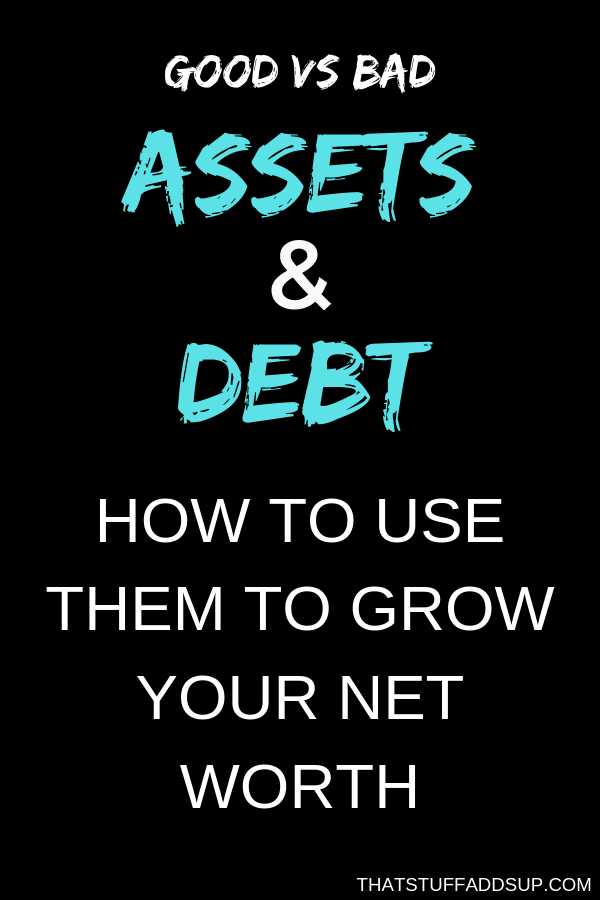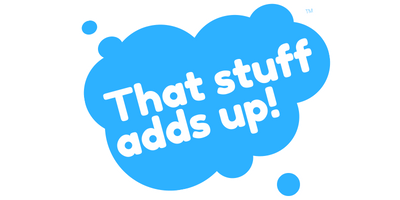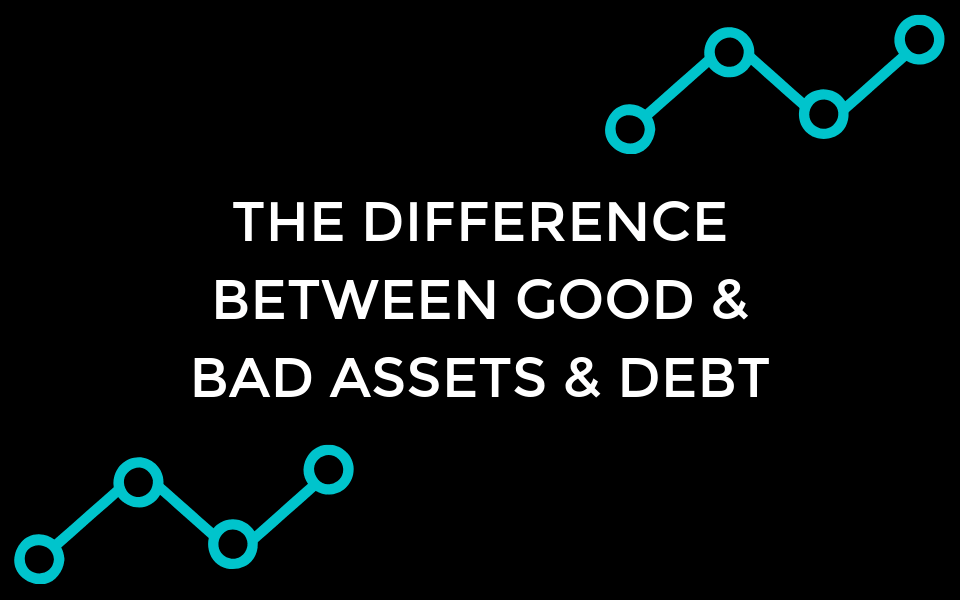On your path to financial freedom, it’s crucial that you eliminate bad assets and bad debt.
If you don’t, then you’ll be on a never-ending cycle of underwater loans and missed financial gains.
In this article, you’ll learn how to easily differentiate between good and bad assets and debts. Afterwards, you’ll be able to eliminate your bad debt and assets so you can grow your wealth with good assets.
How to grow your wealth by eliminating bad assets and debt
If you can eliminate bad assets and debt, then you’ll have more funds available to invest in good assets and investments. As a result, you’ll literally start to see your wealth grow.
In order to do so, you need to understand the difference between good and bad assets and debt.
The difference between good assets and bad assets
Assets are items you own, or have liability for, that have a monetary value. Your assets can be tangible or intangible items.
For example, the following are tangible assets: home, vehicle, RV, boat. And, the following are intangible assets: education (i.e. college degree), stocks, copyrights, trademarks and patents.
So, how do we differentiate between good and bad assets?
The answer is simple.
“Good Assets” are those that appreciate in value over time.
“Bad Assets” are those that depreciate in value over time.
For example, your home or property can be a good or bad asset depending on the local economy of where the land is located.
If home values have been increasing consistently year-over-year for a while, then your home is likely a good asset. If it’s been flat or depreciating, then it’s likely a bad asset.
In contrast, the majority of the time, your vehicle is a bad asset because it depreciates rapidly in value the moment you drive it off the car lot.
There are a few exceptions where a vehicle can be a good asset, but those are limited to antique or classic vehicles and exotic vehicles.
For reference, listed below are common personal assets labeled as good or bad.
| Asset Description | Good or Bad? |
| Home | Good, if appreciating.
Bad, if depreciating. |
| Mobile Home | Bad |
| Land | Good, if appreciating.
Bad, if depreciating. |
| Vehicle (for commuting) | Bad |
| Vehicle (antique, classic or exotic) | Good |
| Boat | Bad |
| RV | Bad |
| Education & Knowledge (college degree, trade certification, etc.) | Good |
Moving on, let’s differentiate between good and bad debt.
The difference between good debt and bad debt
Debt is an obligation you have to pay someone else back for money you borrowed from them. Debt comes with an interest rate attached and is typically secured with assets that you own.
So, how do differentiate between good debt and bad debt?
Differentiating between good and bad debt is a little more complicated than differentiating assets.
There are two variables that are the basis for good or bad debt. First is the underlying asset the debt funds. Second is the interest rate and expense of the debt.
“Good Debt” is debt that helps you obtain assets that either (1) appreciate in value and/or (2) produce more cash flow than the debt costs via interest expenses.
“Bad Debt” is debt that helps you obtain assets that either (1) depreciate in value and/or (2) produce less cash flow than the debt costs via interest expenses.
For example, a home mortgage can be considered good debt if the home/land appreciates in value and produces much more equity for you than the cost of the debt over time.
However, if the home/land is depreciating over time and/or costing you a lot of money to maintain, then your mortgage would be considered bad debt.
Likewise, a student loan can be considered good debt if your college degree and knowledge helps you earn a high income for the foreseeable future.
In contrast, an auto loan is considered bad debt because the asset depreciates in value over time and costs money to maintain rather than producing income.
Similarly, all credit card debt is bad debt. Please, never spend more on your credit card than you can afford to pay off immediately with cash.
For reference, listed below are common personal debts labeled as good or bad.
| Debt Description | Good or Bad?* |
| Home Mortgage | Good, if appreciating.
Bad, if depreciating. |
| Mobile Home Mortgage | Bad |
| Land Mortgage | Good, if appreciating.
Bad, if depreciating. |
| Auto Loan | Bad |
| Credit Card Debt | Bad |
| Boat Loan | Bad |
| RV Loan | Bad |
| Student Loan | Good, if helps you obtain good income.
Bad, if limits you to low income. |
*Note: If any debt has a high interest rate, then I would consider it a bad loan, which you should expedite paying off or refinance to a lower rate.
Optimize your assets and debts to create wealth
Now that you know the difference between good and bad assets and debts, you can use your knowledge to grow your net worth!
Hopefully, it’s very clear that you don’t want bad assets or bad debts.
But, it’s also very important to know that you can use good debt to obtain good assets. If done the right way, then you can generate income and equity for you and your family.
The examples and calculations are better left for another post.
But, the main thing you need to know is that as long as you can obtain a good asset with a low-interest rate loan, then that asset can produce a healthy monthly income for you. And, you could earn a payout from the equity you gain once you sell the asset!
To sum things up, there are good and bad assets and debt. You only want good assets and good debt. If you have any other combination, then free yourself from that situation.
For example, if you have a good asset (i.e. appreciating real estate) funded by bad debt (i.e. high interest rate loan), then refinance your loan and get a good loan. You’ll free up cash, which you were paying as interest, to invest in your retirement accounts.
Likewise, if you have a bad asset (i.e. depreciating vehicle) funded with bad debt (i.e. high interest rate loan), then get an inexpensive vehicle backed by good debt (i.e. low interest rate loan) or no debt.
If you don’t, then you’ll quickly find yourself underwater on your loan.
Now, make a list of all of your good and bad assets along with a list of good and bad debts. Prioritize eliminating the bad asset and bad debt combinations.
Then, tackle the others until you’re left with only good asset and debts.
Want to be the first to know about my new posts? Sign-up for my newsletter below!
Save the image below to Pinterest for future reference!


